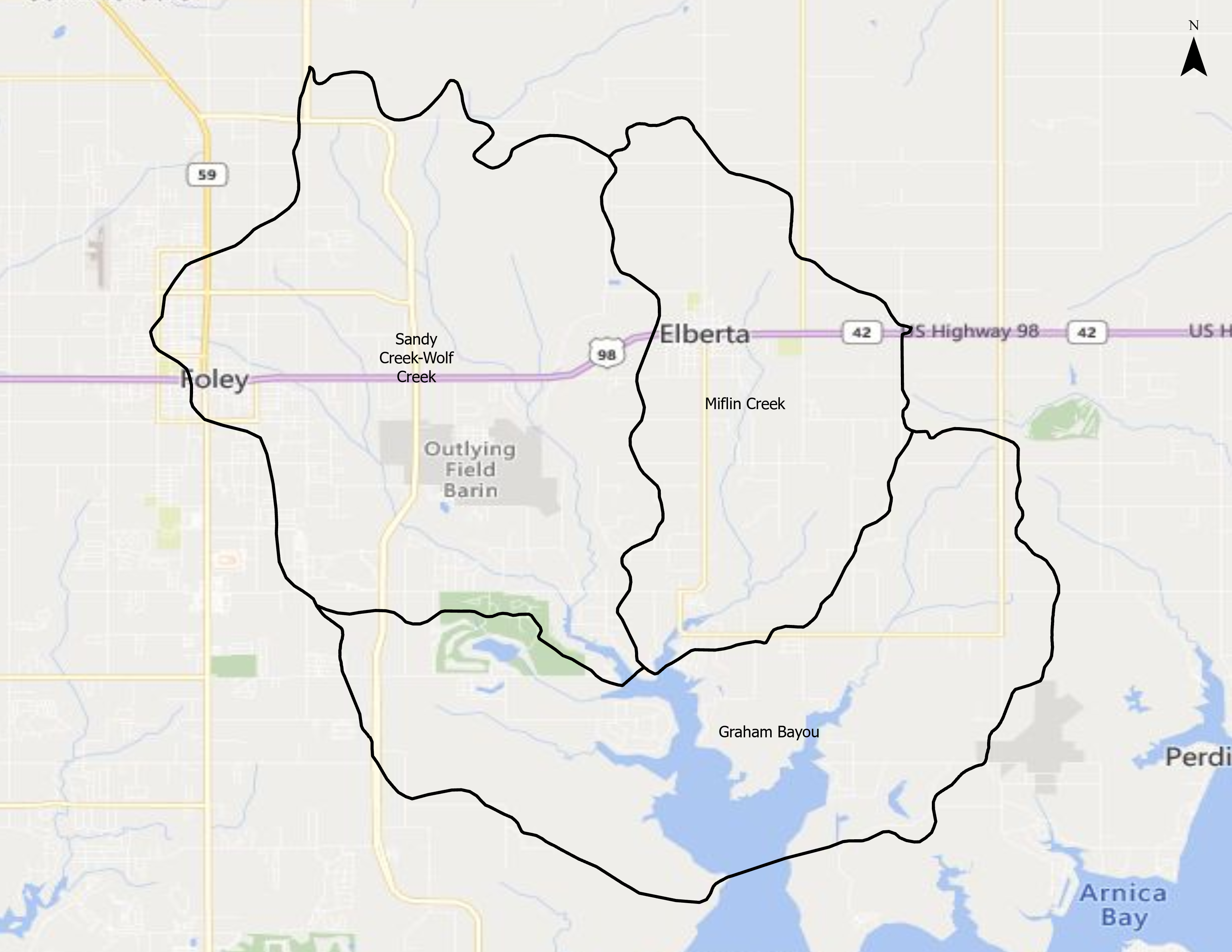The Landscape

Watershed Size and Location
The Wolf Bay Watershed drains over 44,000 acres in southwest Baldwin County. The northwestern portion of the watershed includes a rapidly urbanizing area of the City of Foley. Total land use breakdown: 23% forested land, 27% agricultural land, 27% urban/suburban, 16% wetlands/water and 7% other uses.
Main Tributaries and Tidal Influence
Sandy Creek (HUC 031401070201), Miflin Creek (HUC 031401070202) and Graham Bayou (HUC 031401070203); The named tributaries that flow into Wolf Bay are Wolf Creek, Sandy Creek, Miflin Creek, Hammock Creek, Owens Bayou, Moccasin Bayou and Graham Bayou. The southern edge of these tributaries all experiences daily tidal fluctuations of up to two feet.
Water Use Classification and Impairments
ADEM classifies Wolf Bay and its tributaries for several uses including Swimming & Whole Body Contact, Fish & Wildlife, Shellfish Harvesting and Outstanding Alabama Water (OAW). The OAW classification for Wolf Bay (which extends from the Intracoastal Waterway to Moccasin Bayou) is the highest level of water body classifications. It indicates “high-quality waters that constitute an outstanding Alabama resource of exceptional recreational and ecological significance.” No impairments currently exist, but data has indicated periods of elevated pathogen levels and low dissolved oxygen in the headwaters of Wolf Creek which are within the City of Foley.
Human Uses
Wolf Bay and its tributaries provide excellent sources of fishing, boating, sailing, canoeing, kayaking, bird watching, photography, swimming and more. Access points include 1 paid public access boat ramp, 2 marinas, multiple kayak/canoe launches.
Ecological Importance
The Wolf Bay Watershed encompasses a rich diversity of upland and coastal habitats that support thousands of plant and animals species. The resources within the watershed include fresh and saltwater fish, crabs, shrimp, dolphin, birds, and waterfowl. Wolf Bay serves as a nursery ground for many types of commercially and recreationally important species of fish, crab, shrimp and other organisms. USFWS documented T&E species: Florida manatee (Trichechus manatus latirostris), Alabama red-bellied turtle (Pseudemys alabamensis), Gulf sturgeon (Acipenser oxyrinchus desotoi), American bald eagle (Haliaeetus leucocephalus), wood stork (Mycteria americana) and the red cockaded woodpecker (Picoides Borealis).




